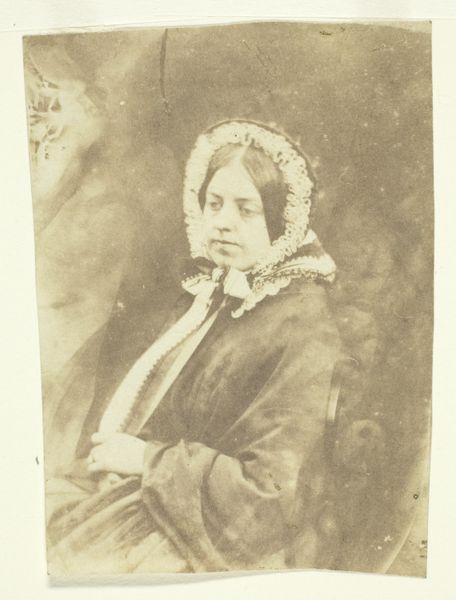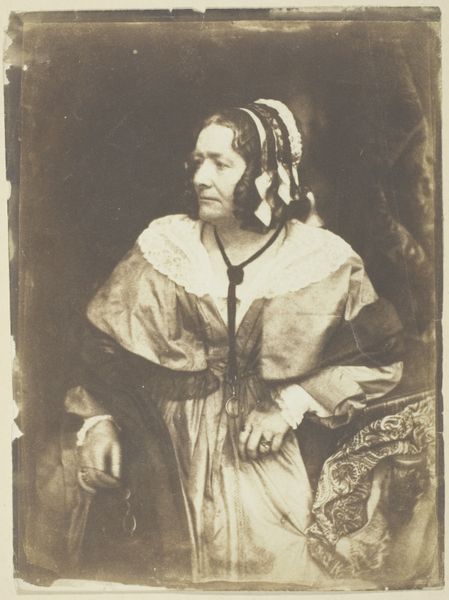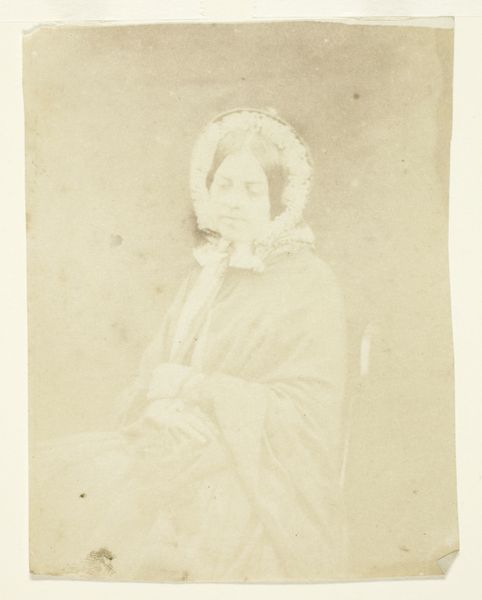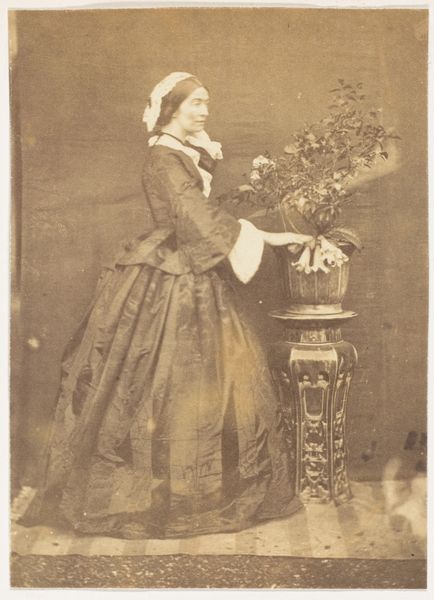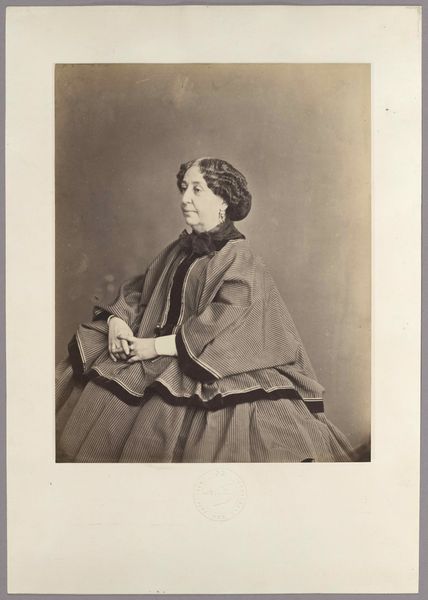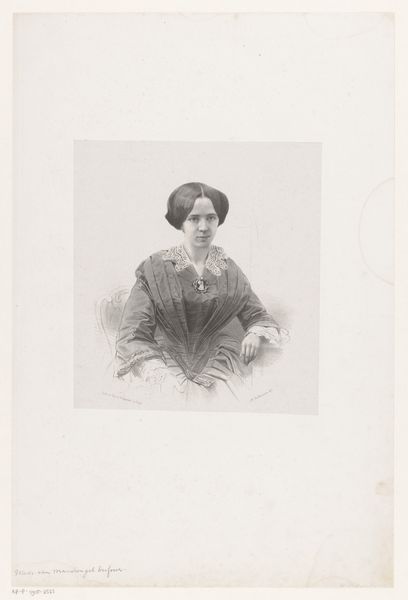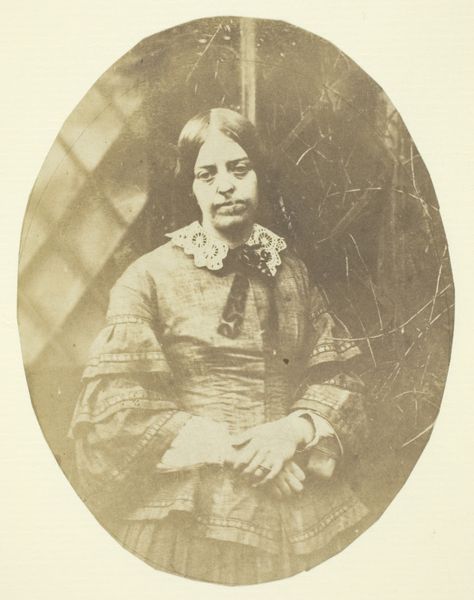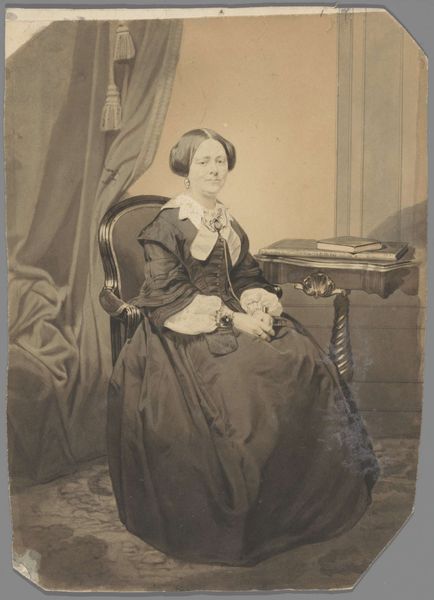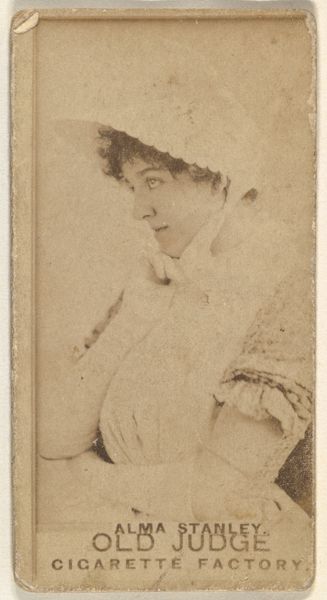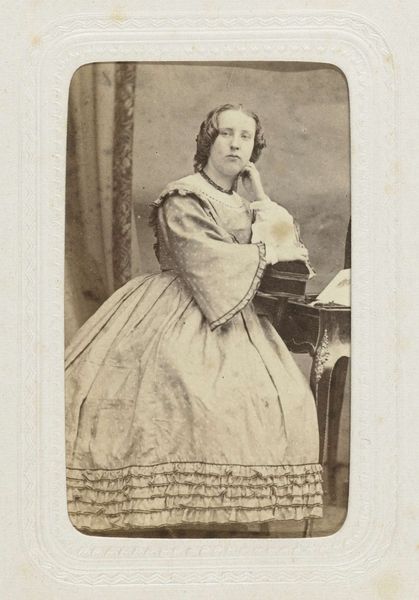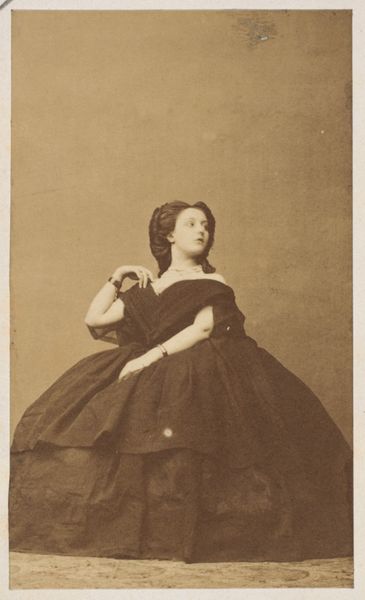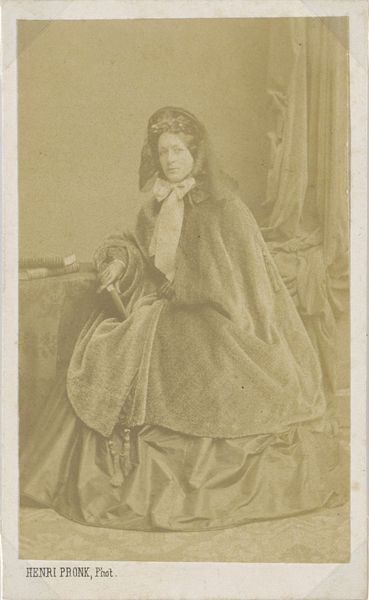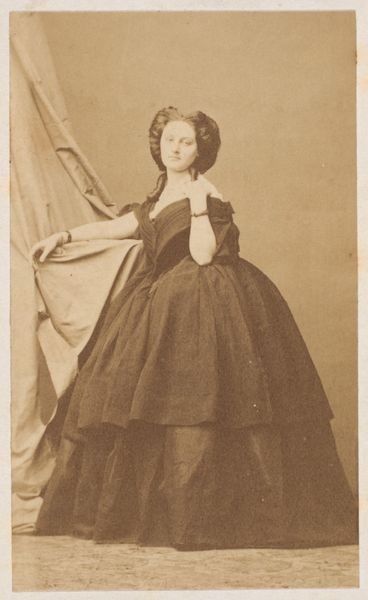
daguerreotype, paper, photography
#
portrait
#
16_19th-century
#
daguerreotype
#
paper
#
photography
#
personal sketchbook
#
england
Dimensions: 12.1 × 9.6 cm (image/paper)
Copyright: Public Domain
Editor: Here we have an intriguing photographic portrait of Mrs. Craik, dating back to the 1850s, crafted as a daguerreotype on paper. Its somber mood makes me wonder about the conventions of portraiture during that period. What do you see in this piece? Curator: Indeed. Beyond the visual likeness, this daguerreotype captures a cultural encoding. Notice her lace bonnet; it’s not merely decorative. It speaks of modesty, domesticity, and the societal expectations placed upon women in 19th-century England. Consider also how the act of clasping her hands may suggest introspection. Do you think that could reflect more widely held social anxiety around women's roles and the era’s evolving class structure? Editor: That's fascinating! So, the simple act of posing and dress becomes laden with meaning about the sitter's world and status. Are there specific details in her expression or bearing that reveal further cultural clues? Curator: Precisely. Even the minimal adornment can suggest the values she sought to embody and communicate. Look at her slightly averted gaze, not engaging the viewer directly, it conveys a sense of reserved dignity. And consider that the newly accessible medium of photography served both to democratize portraiture, but also as an agent to cement existing social hierarchies. How does this daguerreotype speak to both realities, do you think? Editor: It feels like a complex tension. I hadn’t considered how deeply interwoven identity and representation were, even in these early photographic practices. Thanks, I have new perspectives to think through. Curator: The image acts as a repository of layered symbolism. By unraveling these visual threads, we uncover how identities were constructed and understood in a particular era. It provides a window into the past that helps us to see it in richer, more complex detail.
Comments
No comments
Be the first to comment and join the conversation on the ultimate creative platform.

